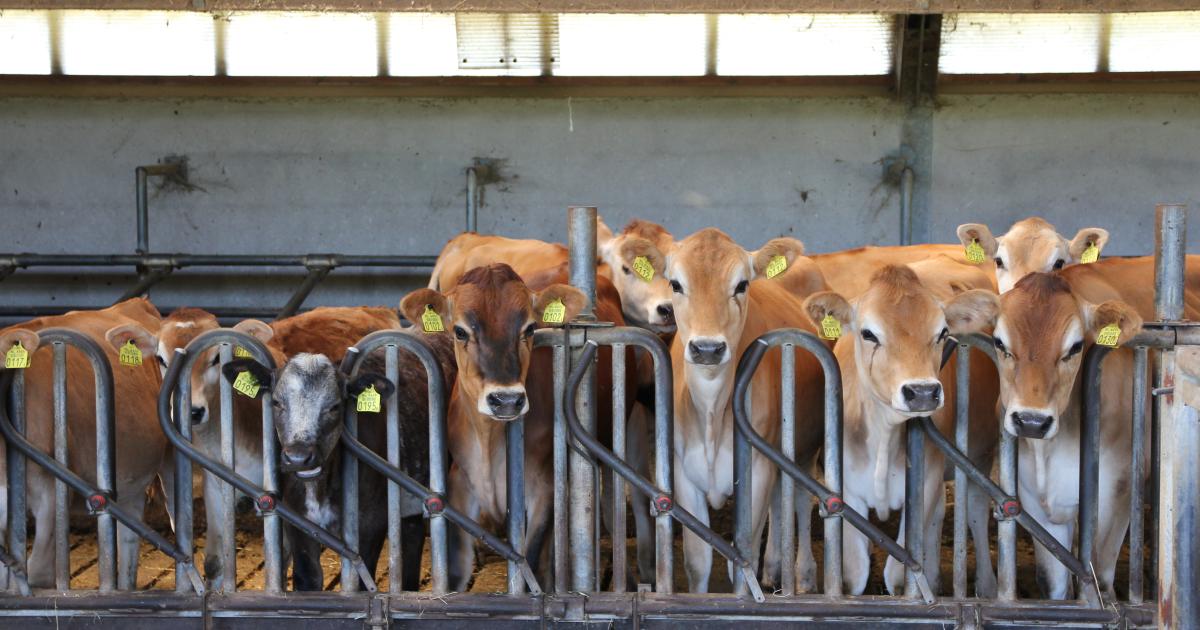Regenerative agriculture is having a moment. From farming circles to food documentaries, it’s being framed as the answer to our broken food system. But there’s a central contradiction in the way the term is being used, and it risks locking us into another unsustainable paradigm.
If regeneration means restoring soil health, halting wildlife loss, and cutting emissions, we must be willing to say something that some may find uncomfortable: true regenerative farming cannot include livestock.
Most definitions of regenerative agriculture include animals as an essential component - for fertilising soil, rotating with crops, or mimicking 'natural' grazing systems. But this assumption doesn’t hold up under scrutiny.
Earthworms
Globally, 83 per cent of agricultural land is used for animal farming, while providing just 18 per cent of our calories. The carbon footprint of meat and dairy is vastly higher than plant-based alternatives, and the inefficiencies are staggering.
According to Oxford University research, shifting to a plant-based food system could cut food emissions in half and free up three-quarters of farmland - land that could be rewilded, reforested, or returned to nature.
There’s a misconception that ruminants are necessary for soil fertility. In reality, natural ecosystems maintain soil health without domesticated animals. Earthworms, microbes, fungi and plant roots already do the job.
Soil scientist Amir Kassam calls these organisms “a million tiny cows.” His work supports stock-free organic farming, which avoids all animal inputs and instead uses green manures, compost, cover crops, and minimal tillage.
It’s not just theoretical: farms like Tolhurst Organic in Oxfordshire are showing what’s possible. Tolhurst’s land hosts an astonishing 1,500 earthworms per square metre, a benchmark for soil vitality.
Resistance
I’ve seen the contradictions of animal farming firsthand. In the early 2010s, I worked on a large dairy farm. Thousands of cows grazed fields stripped of their biodiversity. The soil was churned and compacted. The runoff polluted local waterways. I waded knee-deep through slurry.
The animals deemed sick or unproductive were separated into a 'red herd' and milked daily, even though their milk was dumped due to antibiotic and other pharmaceutical contamination. This is standard practice in the industry.
The experience changed my life. It led me to go vegan, and to begin advocating for food systems that are genuinely sustainable - for animals, for ecosystems, and for the people caught inside this harmful system.
One of the less talked-about impacts of livestock farming is its contribution to antimicrobial resistance (AMR). Around two-thirds of all antibiotics produced globally are used in animals raised for food. This drives resistance in bacteria, a threat that the WHO ranks among the top 10 global health threats.
By 2050, AMR is projected to kill more than 10 million people per year, more than all global deaths from COVID-19. Continuing to rely on livestock farming while acknowledging this reality is, frankly, reckless.
Biodiversity
Critics often paint vegan or stock-free farming as anti-farmer. I reject that completely. Many livestock farmers want out, they just don’t see a viable path forward.
A recent survey by Stockfree Farming, a UK nonprofit, revealed that 56 per cent of livestock farmers feel morally concerned about their work, 45 per cent suppress feelings of compassion to carry on and 74 per cent would welcome government-funded training in non-livestock farming.
Farmers are trapped in an economic model that rewards volume, not values. Suicide rates in farming communities - especially among livestock farmers - are disturbingly high. We need to create alternatives: training, transition support, and financial incentives to shift toward more ethical, ecological land use.
Stockfree regenerative agriculture isn’t fringe, it’s emerging as the gold standard of ethical, ecological farming. It offers all the benefits associated with regeneration - improved soil health, carbon drawdown, local food systems - without the massive costs to animals, climate, and public health.
And as climate and biodiversity crises deepen, this approach will become not just preferable, but necessary. Regenerative farming must evolve, not as a way to justify meat and dairy, but as a way to replace them.
Powered
We already know that ecosystems can thrive without livestock. Forests, meadows, and wetlands all regenerate perfectly well when left to their own devices. The problem isn’t the absence of ruminants, it’s the absence of space.
Rewilding that land, planting trees, restoring wetlands; these are the regenerative acts we need most.
Regenerative agriculture has potential, but only if we’re honest about its limits. If we continue to frame livestock as essential to sustainable farming, we risk greenwashing one of the most destructive industries on the planet.
The future of farming lies in plant-based systems, powered by biology, not animal exploitation. We already have the tools. What we need now is the will to act.
This Author
Hamish Ainsley is a sustainability advocate, vegan business founder, and writer focused on ethical food systems, wildlife, and decarbonisation.
